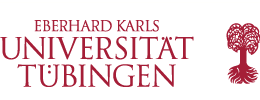[Uni Tübingen] - [Mat.-Nat. Fakultät] - [Fachbereich Chemie] - [Anorg. Chemie] - [Klaus Eichele] - [Publications] - Abstracts 2014
 |
Klaus Eichele Publication Abstracts 2014 |
| [UP] |
H. Scheel, J. Wiederkehr, K. Eichele, H. A. Mayer, F. Winter, R. Pöttgen, L. Wesemann: Dinuclear copper complexes: coordination of Group 14 heteroborates Dalton Trans. 2014, 43(31), 11867-11876. DOI 10.1039/c4dt01242a |
Dicopper(I) complexes with the chelating dmapm ligand [dmapm = 1,1-bis{di(o-N,N-dimetylanilinyl)phosphino}methane] have been synthesized and characterized structurally. Synthesis of the acetonitrile adduct [Cu2(µ-dmapm)(CH3CN)2][BF 4]2 (1) has been presented and the dicopper electrophile has been used as the starting material in reaction with Group 14 heteroborates. Coordination of the closo-borates at the dicopper moiety resulted in different molecular structures with varying Cu...Cu distances. In the case of the side on coordinated stanna-closo-dodecaborate the tin vertex has been characterized by 119Sn Mössbauer spectroscopy and the nucleophilicity at the tin was established in reaction with a molybdenum carbonyl complex.
| [UP] |
N. Dettenrieder, C. O. Hollfelder, L. N. Jende, C. Maichle-Mössmer, R. Anwander: Half-Sandwich Rare-Earth-Metal Alkylaluminate Complexes Bearing Peripheral Boryl Ligands Organometallics 2014, 33(7), 1528–1531. DOI 10.1021/om401163a |
[(C5Me5)LnMe2]3 (Ln = Y, Lu) dissolve readily in a n-hexane/toluene mixture upon addition of 3 equiv of the organoaluminum boryl compound [Me2Al{B(NDippCH)2}]2 (Dipp = C6H3iPr2-2,6). The half-sandwich complexes (C5Me5)Ln[(AlMe3){B(NDippCH)2}]2 thus formed display unsymmetrical heteroaluminate coordination not only in the solid state but also at lower temperatures in solution, which is distinct from the behavior of the homoaluminate congeners (C5Me5)Ln(AlMe4)2. The effect of homo- versus heteroaluminate coordination is assessed in the coordinative polymerization of isoprene.
| [UP] |
J. Henning, K. Eichele, R. F. Fink, L. Wesemann: Structural and Spectroscopic Characterization of Tin–Tin Double Bonds in Cyclic Distannenes Organometallics 2014, 33(14), 3904–3918. DOI 10.1021/om500645b |
Three cyclic distannenes, 1, 3, and 4, and one spacer-bridged bis(stannylene), 2, were prepared and thoroughly investigated by single-crystal X-ray diffraction in the solid state, by variable-temperature (VT) 119Sn NMR, VT 1H NMR, 13C NMR, and UV–vis spectroscopy in solution, and by quantum chemical calculations. The tin(II) compounds feature rigid 9,9-dimethylxanthene or naphthalene backbones and very bulky m-terphenyl substituents ArR [=C6H3-2,6-{C6H2-2,4,6-R3}2; R = Me (1, 3), i-Pr (2, 4)]. For distannenes 3 and 4, the strain of the naphthalene backbone results in rather short tin–tin distances of 2.7299(3) and 2.7688(2) Å, respectively, whereas the xanthene backbone produces long tin–tin distances of 3.0009(7) Å for distannene 1 and 4.2779(7) Å for the spacer-bridged bis(stannylene) 2. In comparison to the AriPr substituents, the less bulky ArMe substituents give rise to stronger trans-bending of the distannenes; moreover, DFT calculations indicate that, in contrast to AriPr, the ArMe substituents allow for asymmetric distortion of the trans-bending in dynamic processes. The oxidation products of distannene 1 and bis(stannylene) 2 reveal rare structural motifs: dihydroxydistannoxane 5 and bis(dihydroxystannane) 6, respectively, which feature terminal Sn–OH functionalities. The reaction of distannene 1 with 1 equiv of potassium chloride in the presence of the cryptating agent 222 results in the formation of the unusual stannyl stannide 7. A modified synthesis protocol for the preparation of distannene 1 yields in one step the stannyl stannylene 8 with a center of chirality at the stannyl tin atom. The series 1, 7, and 8 represents a variation of electronic tin–tin interactions.
| [UP] |
M. Göhner, F. Herrmann, K. Eichele, H. F. Bettinger, M. Ströbele, N. Kuhn: Die Strukturchemie der 2-Chalkogeno-1,3,4,5-tetraisopropylimidazoline Z. Naturforsch. B 2014, 69, 1384–1394. DOI 10.5560/ZNB.2014-4189 |
1,3,4,5-Tetraisopropyl-2-thioimidazoline (6b) was prepared by condensation of N,N'-diisopropylthiourea and isobutyroin. 1,3,4,5-Tetraisopropyl-2-oxoimidazoline (6a), 1,3,4,5-tetraisopropyl-2-selenoimidazoline (6c) and 1,3,4,5-tetraisopropyl-2-telluroimidazoline (6d) were obtained from 2,3-dihydro-1,3,4,5-tetraisopropylimidazol-2-ylidene and dinitrogen oxide or selenium and tellurium, respectively. The crystal structure analyses revealed the presence of the A-type rotamer for 6a while for 6c a paddlewheel-like orientation of the isopropyl substituents was found (I type). In crystals of 6b, both A- and E-type molecules are present while in solution at room temperature the I-type rotamer is detected. A dynamic 1H and 13C{1H} NMR study of 6b in the range of 185.5 to 423.3 K revealed a temperature-dependent rotation of the isopropyl substituents (ΔH† = 15.7(9) kcal mol-1, ΔS† = -5(3) cal K-1 mol-1, ΔG† = 17.2(9) kcal mol-1) with I as the rotamer of lowest energy. This result is confirmed by MO calculations which indicate A and C being the next stable rotamers. The barrier of rotation of the isopropyl substituents about the C–N bond from I to C (B3LYP ΔH† = 13.7 kcal mol-1, ΔG† = 15.4 kcal mol-1) is slightly lower than that about the C–C bond from I to G.
[ Anorg. Chemie ] | [ Go Home ] | webm@ster | last modified: 03.03.2016

